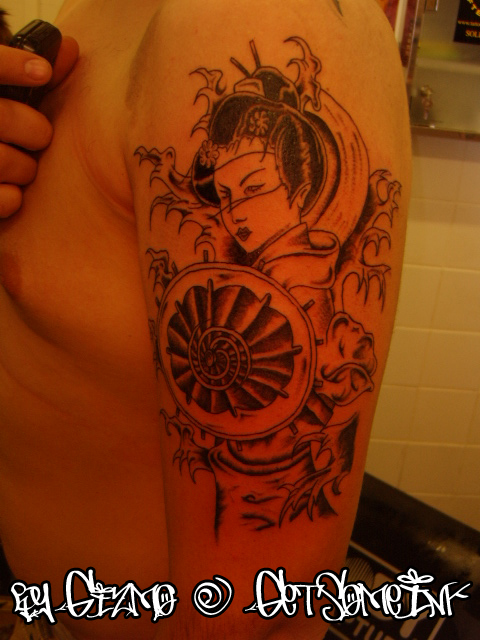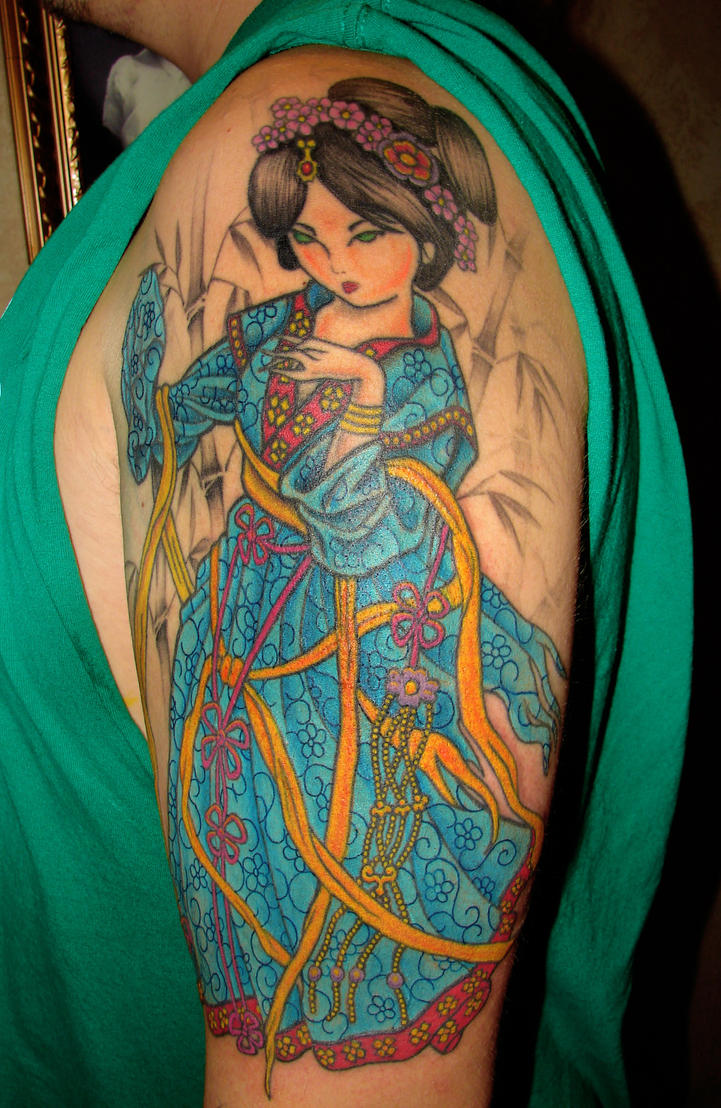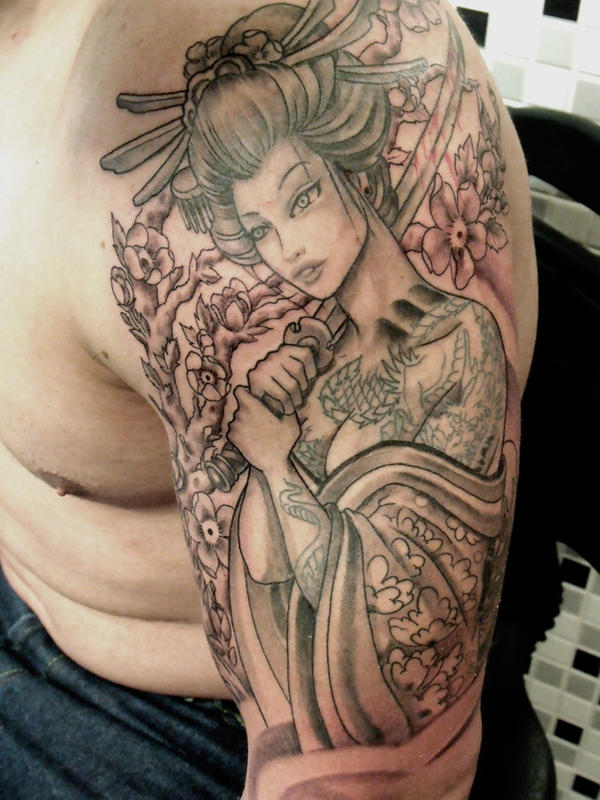
Shoulder Japanese Geisha Tattoo Picture 1
Tattoo Center. Shoulder japanese geisha tattoos. The original performers who can be seen as the basis for geisha are the high-born 11th century women who would dance for the warrior class. This practice combined with that of the taikomochi or hokan--performers who were strictly male--and eventually became what we know as the geisha art. During the pinnacle of their popularity, they were often the patrons of shoguns and doymios (high-ranking generals) and sometimes even the concubines of the emperor.

Shoulder Japanese Geisha Tattoo Picture 2
Shoulder japanese geisha tattoos. As is the case with any artist, geisha undergo intensive training. They are taught a wide variety of traditional arts such as the tea ceremony, singing and playing traditional instruments, flower arranging and the proper way to serve alcohol. The most important part of their training is learning traditional dances. As society and technology have advanced, so have the practices of the geisha. Now along with the more traditional arts, geisha are also taught English and computer skills.

Shoulder Japanese Geisha Tattoo Picture 3
Shoulder japanese geisha tattoos. What makes a geisha instantly recognizable is her clothing and make-up. The most important (and expensive) part of a geisha's attire is her kimono. These kimonos can have incredibly intricate designs on them; the color and pattern of which changes with the seasons. A geisha's hair is always styled elaborately and up-swept so that the back of the neck is revealed. A perfectly white face and bright red lips give a geisha her striking features.

Shoulder Japanese Geisha Tattoo Picture 4
Shoulder japanese geisha tattoos. When fully put together for a night of entertaining, a geisha is a beautiful work of art. This artistry hides the fact that until well into the 20th century, poor families sold their daughters to geisha houses (ochaya). These girls would work as maids until it was decided they should be taught the geisha art. Prior to World War II, a geisha's virginity could also be sold when she'd reached what was called "mizu-age."

Shoulder Japanese Geisha Tattoo Picture 5
Shoulder japanese geisha tattoos. Dancing is an important part of the geisha art. Odoriko (dancing girls) were people who existed in medieval Japan and are in part responsible for the inclusion of dancing in a geisha's training. Dancing is usually an art restricted to the younger geisha (maiko). Dances such as the Miyako Odori and Cherry Dances have been performed since the 19th century. Second only to a geisha's ability to dance was her playing of an instrument called a shamisen. This three-stringed instrument could be played to either accompany the geisha's own singing or a companion's dance.